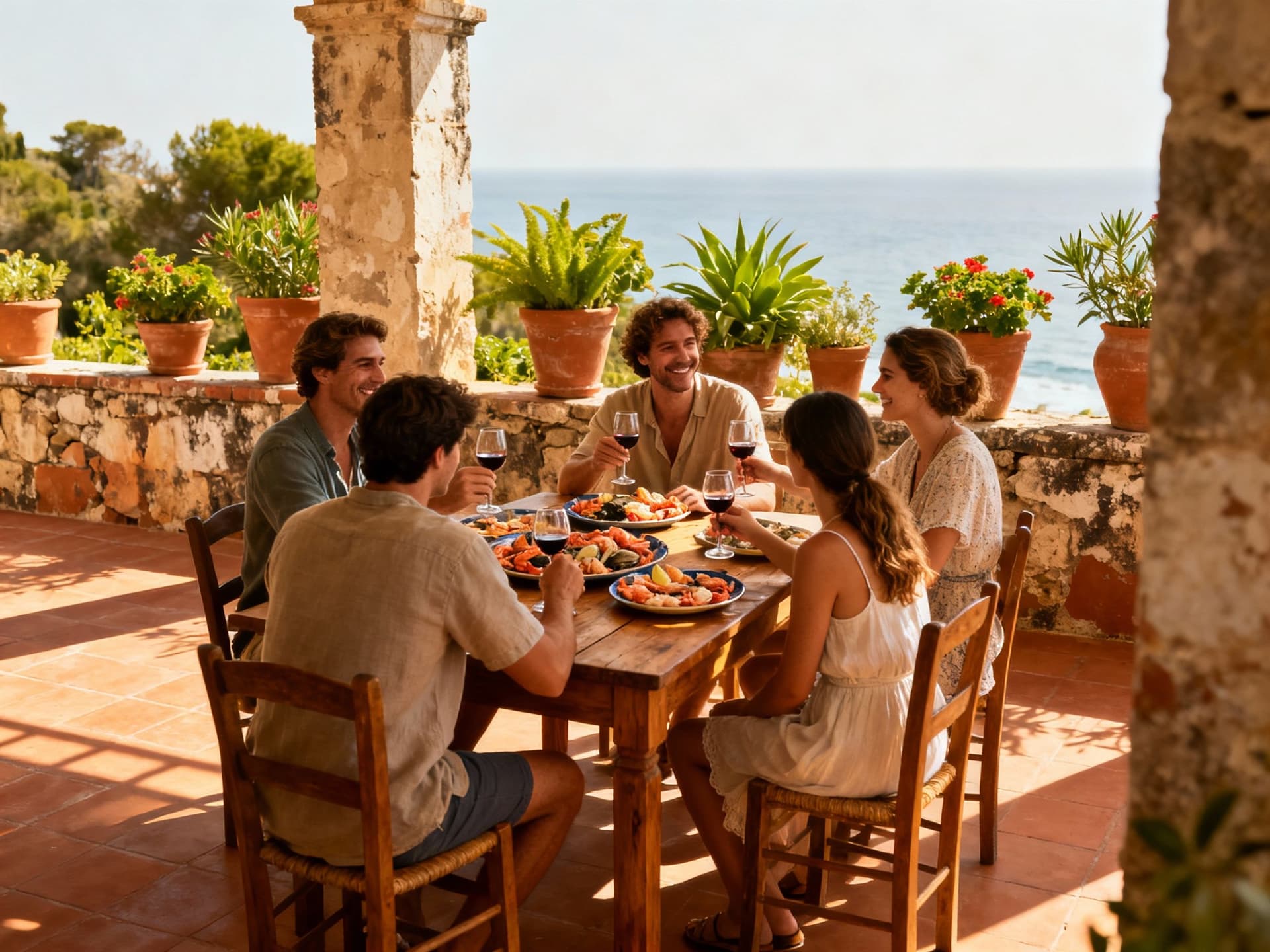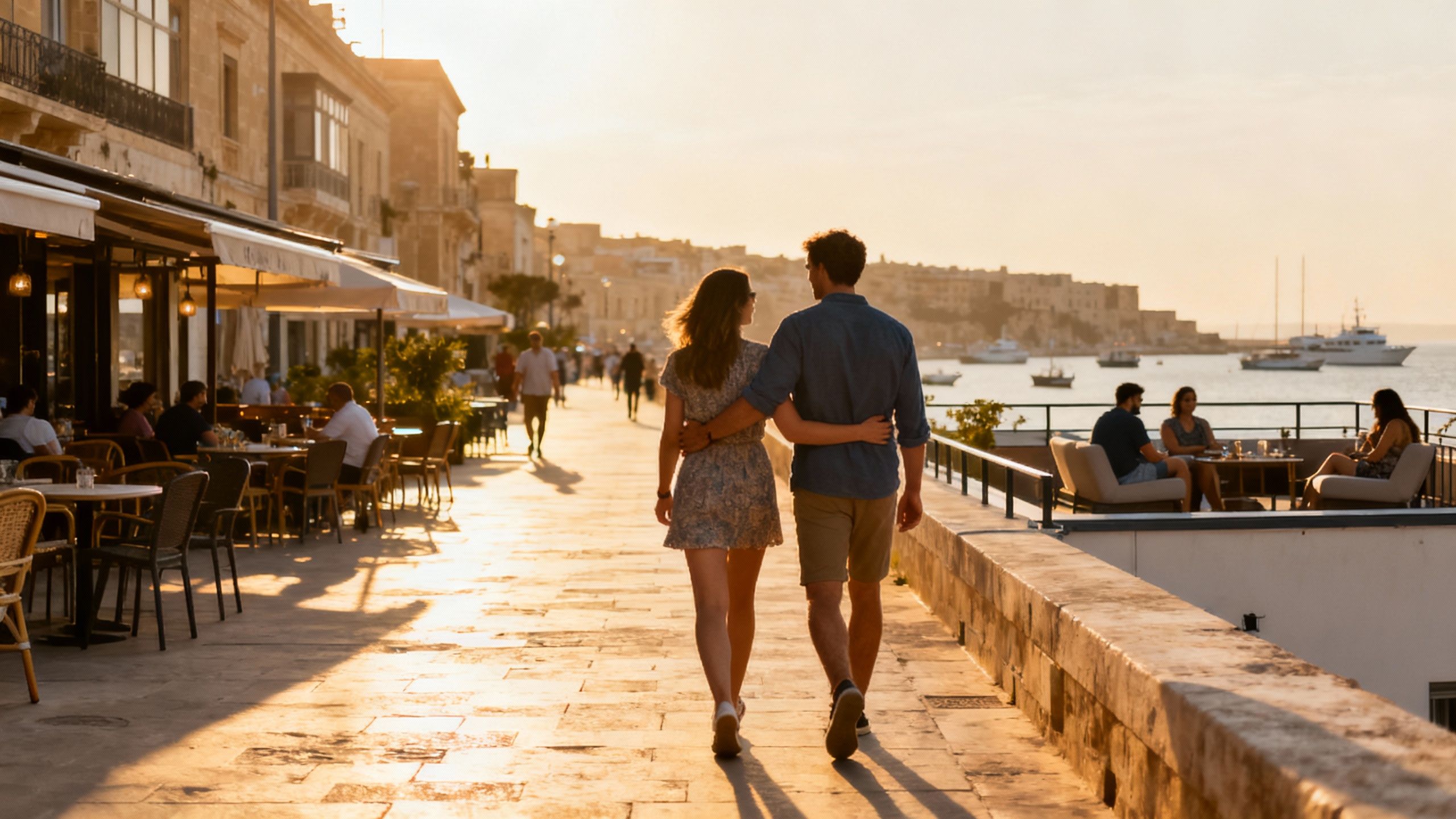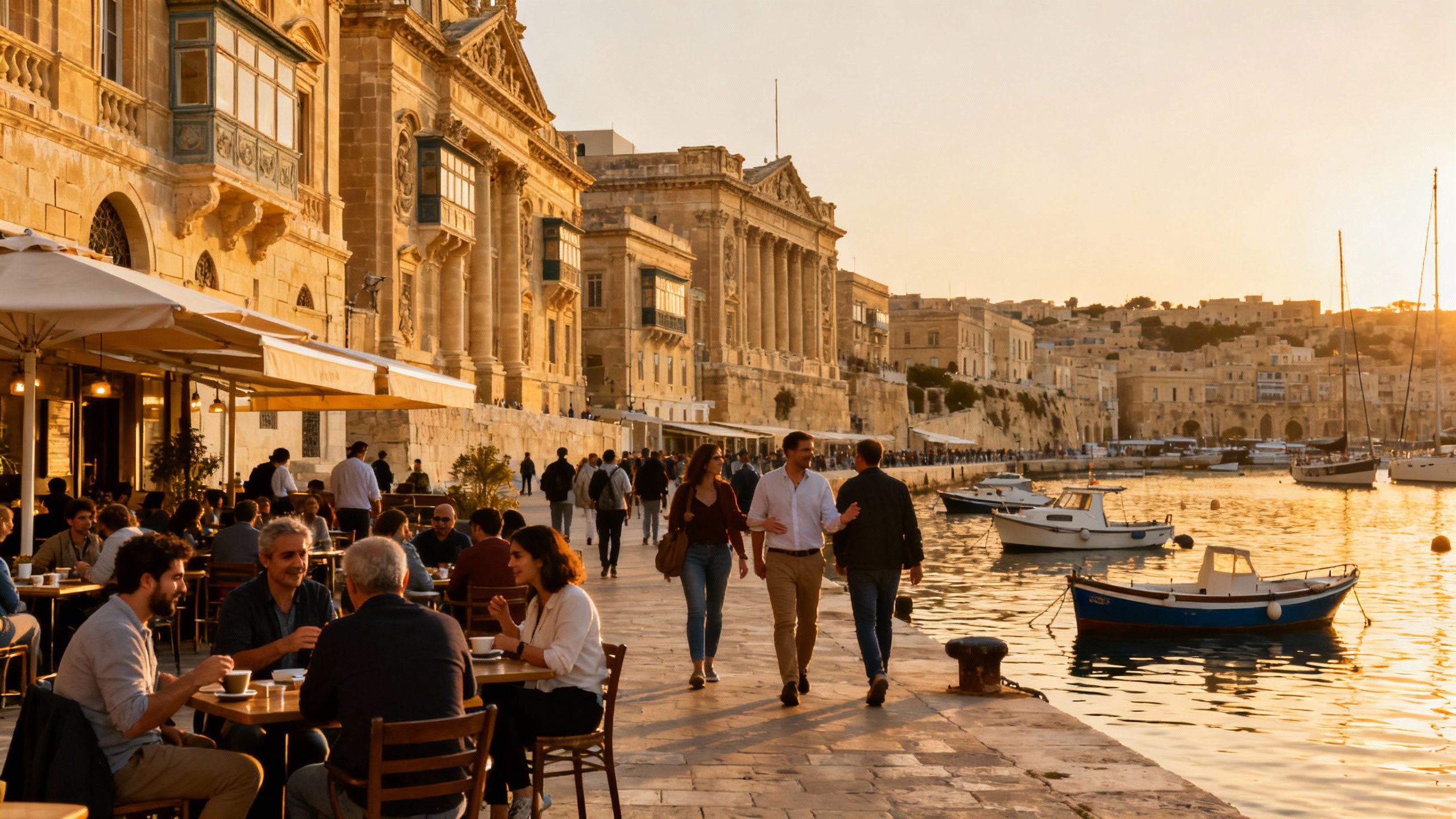The French Coastal Town Buyers Overlook (and Why It Pays)
Contrarian market insight: certain coastal and market towns in France offer authentic, affordable living while national data shows a cautious 2025 rebound in prices.
Imagine arriving in a narrow Provençal lane at dusk: the stone warms beneath your hand, an elderly boulanger nods as the last trays of fougasse pass through the window, and a table of neighbours spill wine onto the pavement. This is the ordinary spectacle that draws people to France — not the postcard but the lived-in rhythm of markets, weekday cafés and small civic pride. For international buyers the question is not merely where to own, but where that daily life still feels authentic and affordable. Recent French market data suggests the moment is complex: price pressure in core cities coexists with overlooked value on certain coasts and in inland towns.
Living French Life: Where the Romance Meets Reality

The French life you see in books — cafés at 9am, aperitifs at 19:30, long market Saturdays — is not evenly distributed. In Paris’s Marais or Aix-en-Provence’s Cours Mirabeau the cadence is metropolitan, cultured and conspicuously curated; in Sète, Royan or parts of Languedoc the rhythm is maritime and local, with fishermen, small artisans and weekly marchés setting the tempo. Where you place your purchase determines whether mornings begin with a tram’s bell, a sea breeze, or a village baker’s bell. That choice also shapes practical needs: insulation for old stone houses inland, flood awareness on certain coasts, or apartment co-ownership rules in dense urban quartiers.
Neighbourhood spotlight: Sète and the Languedoc coast
Sète has the honest, slightly weathered charm that luxury brochures seldom emphasise: canals like quiet veins, fish restaurants where fishermen still choose the day’s menu, and simple villas with terraces that catch the light. Buyers often bypass Sète for the Côte d’Azur; that very indifference keeps prices more civil and the communities intact. For those who prize an active, sea-based life without the Riviera premium, towns such as Sète, Agde and nearby Bandol provide both a cultural seam and more patient market dynamics.
Food, markets and conviviality: where chefs actually buy
From Aix’s marché des Prêcheurs to the marché des Halles in Narbonne, the food life defines where people linger and invest. Chefs and restaurateurs increasingly choose provincial towns with strong seasonal producers rather than congested city centres; that trend matters because a neighbourhood with an active market often sustains steady demand for well‑crafted properties. INSEE’s early 2025 data shows house prices rebounding modestly after a period of stability, but the rebound is uneven — lively market towns can outpace national averages while certain second‑home hotspots lag.
- Local lifestyle highlights • Morning marchés (Aix: Les Prêcheurs; Sète: Les Halles) • Coastal walks and oyster beds (Cap Ferret, Arcachon) • Village fêtes and saint’s day processions in Provence • Weekday cafés where neighbours discuss municipal life • Small artisanal bakeries and family-run boucheries
Making the Move: Practical Considerations That Preserve the Life You Want

If you buy for the life rather than the asset alone, small practical choices matter: proximity to the market, sun orientation for terraces, local school calendars and town planning constraints that protect village character. Transaction volumes have recovered in parts of 2025 while other segments remain subdued: the notaires’ regional notes show a marked rebound in Ile‑de‑France sales early in 2025, but secondary‑home markets have been more uneven. That divergence changes how quickly you’ll convert a visit into a purchase and how a home will feel year‑round.
Property types and the life they permit
A narrow stone maison de village will offer a cadence of stairs, thick walls and cooler summers; a seaside villa gives immediate outdoor life but requires attention to salt corrosion and coastal planning rules. In towns where chefs and artisans gather, modest apartments above commerces are lived‑in and connected; in vineyard country, long houses with courtyards and cellars answer to both family living and hospitality possibilities. Match form to habit: if you imagine year‑round life, prioritise thermal comfort and local services; if seasonal use is intended, check rental regimes and calendar restrictions.
Working with local experts who guard the lifestyle
- How a curated local agency protects both life and value 1. A local agent will vet neighbourhoods by daily life, not just price — they know where the market reopens each year and which shops anchor community life. 2. They identify planning constraints and restoration histories that preserve character and guard against destructive development. 3. They source trusted artisans for sympathetic renovation (stonemasons, lime plasterers, period joiners). 4. They advise on seasonal income potential versus municipal short‑stay restrictions (important for second‑home buyers).
Insider Knowledge: What Expats Wish They’d Known Earlier
Expats who settle in France often say the surprises are practical and poetic: the small municipal rituals, the rhythm of council minutes, the way a market stallholder remembers your wine preference. They also report three recurring regrets: underestimating year‑round utility and heating needs in old stone houses; overpaying for coastal prestige where maintenance is constant; and choosing second‑home towns without checking seasonal municipal rules. These lessons change where the wise buyer looks: slightly inland towns with lively centres can deliver the same daily pleasures with more predictable costs.
Cultural integration and community — small rituals that matter
Learning a few phrases, attending the weekly marché and introducing yourself at the mairie make a substantive difference in small‑town France. Neighbourly trust is layered and slow; an owner who shows interest in local customs will be welcomed sooner. Practically, this social capital helps when you commission local work, request permits, or simply ask about winter road conditions — the community will advocate for residents it recognises as committed.
Longer view: how lifestyle holdings evolve
If your aim is stewardship rather than speculation, consider how a property will age with use. INSEE’s early‑2025 data shows house prices returning to modest growth nationally after a protracted adjustment; local performance will be driven by services, connectivity and municipal planning. Choose places with active town centres and artisan networks and you buy into a living economy — that is the truest preservation of value.
- Red flags and pragmatic checks • Check municipal short‑stay regulations before assuming rental income. • Inspect for rising damp and roof insulation in older stone properties. • Ask the mairie about planned developments that could alter the neighbourhood. • Confirm road access and winter maintenance for inland villages. • Verify artisan availability locally for restorations.
When I moved here I expected theatrical differences; what matters most is predictable, considerate detail: a reliable boulanger, a post office open midday, a neighbour who minds the bins. For buyers the task is to translate romance into durable daily practice — to buy not only the view but the life that sustains it. A local, curated agency becomes less an intermediary and more a steward, aligning heritage, habit and real value.
- Next steps for buyers who want the life, not the label 1. Visit in two seasons: a market‑heavy summer weekend and an ordinary autumn week to compare rhythms. 2. Ask agents for three recent local comparable sales and the names of local artisans they trust. 3. Meet the maire or local councillor about planned works near a property. 4. Commission a brief technical survey focused on insulation, damp and roof condition. 5. If you intend seasonal renting, confirm municipal short‑stay quotas and registration rules.
If France’s allure is sensory — the sea, the market, the slow symmetry of village life — let practicality be the frame that keeps the picture intact. Regions that feel overlooked often deliver the most complete lives: a market stall you recognise, a local café with winter regulars, an honest coast without the glint of excessive price. Begin with curiosity, prepare with local facts, and work with an agency that understands both the architecture of a place and the human architecture that animates it.
Relocating from London to Mallorca in 2014, I guide UK buyers through cross-border investment and tax considerations. I specialise in provenance, design integrity, and long-term value.


